#the saga of ragnar lothbrok
Text
a recurring theme in the Volsunga saga is men disregarding women's sound advices and meeting their end because of this course of action
it's something that happens to both Volsung and Ragnar, and it's interesting to see how in both cases it was Volsung women giving this advice to men in their family.
Aslaug meeting the same fate as Signy, and no matter their powers or their relations to these man their visions will not deter them from seeking their destiny.
3 notes
·
View notes
Text
From a terrifying pit of snakes, Viking king Ragnar Lothbrok sang out about his life and death and his words were recorded in a legendary poem.
81 notes
·
View notes
Text
youtube
In this video, we are counting down the top TV shows that bring the rich history and spirit of the Vikings to life!
#vikings#vikings history#vikings valhalla#the last kingdom#vinland saga#norsemen#ragnar lothbrok#Youtube
2 notes
·
View notes
Text
List of interesting ressources pertaining to norse paganism, scandinavian folklore and history, and nordic religions in general
These are sources I have personally used in the context of my research, and which I've enjoyed and found useful. Please don’t mind if I missed this or that ressource, as for this post, I focused solely on my own preferences when it comes to research. I may add on to this list via reblog if other interesting sources come to my mind after this has been posted. Good luck on your research! And as always, my question box is open if you have any questions pertaining to my experiences and thoughts on paganism.
Mythology
The Viking Spirit: An Introduction to Norse Mythology and Religion
Dictionnary of Northern Mythology
The Prose and Poetic Eddas (online)
Grottasöngr: The Song of Grotti (online)
The Poetic Edda: Stories of the Norse Gods and Heroes
The Wanderer's Hávamál
The Song of Beowulf
Rauðúlfs Þáttr
The Penguin Book of Norse Myths: Gods of the Vikings (Kevin Crossley-Holland's are my favorite retellings)
Myths of the Norsemen From the Eddas and the Sagas (online) A source that's as old as the world, but still very complete and an interesting read.
The Elder Eddas of Saemung Sigfusson
Pocket Hávamál
Myths of the Pagan North: Gods of the Norsemen
Lore of the Vanir: A Brief Overview of the Vanir Gods
Anglo-Saxon and Norse Poems
Gods of the Ancient Northmen
Gods of the Ancient Northmen (online)
Two Icelandic Stories: Hreiðars Þáttr and Orms Þáttr
Two Icelandic Stories: Hreiðars Þáttr and Orms Þáttr (online)
Sagas
Two Sagas of Mythical Heroes: Hervor and Heidrek & Hrólf Kraki and His Champions (compiling the Hervarar saga ok Heiðreks and the Hrólfs saga kraka)
Icelandic Saga Database (website)
The Saga of the Jómsvíkings
The Heimskringla or the Chronicle of the Kings of Norway (online)
Stories and Ballads of the Far Past: Icelandic and Faroese
Heimskringla: History of the Kings of Norway
The Saga of the Volsungs: With the Saga of Ragnar Lothbrok
The Saga of the Volsungs (online) Interesting analysis, but this is another pretty old source.
The Story of the Volsungs (online) Morris and Magnusson translation
The Vinland Sagas
Hákon the Good's Saga (online)
History of religious practices
The Viking Way: Magic and Mind in Late Iron Age Scandinavia
Nordic Religions in the Viking Age
Agricola and Germania Tacitus' account of religion in nordic countries
Myths and Symbols in Pagan Europe: Early Scandinavian and Celtic Religions
Tacitus on Germany (online)
Scandinavia and the Viking Age
Viking Age Iceland
Landnámabók: Book of the Settlement of Iceland (online)
The Age of the Vikings
Gesta Danorum: The Danish History (Books I-IX)
The Sea Wolves: a History of the Vikings
The Viking World
Guta Lag: The Law of the Gotlanders (online)
The Pre-Christian Religions of the North This is a four-volume series I haven't read yet, but that I wish to acquire soon! It's the next research read I have planned.
Old Norse Folklore: Tradition, Innovation, and Performance in Medieval Scandinavia
Children of Ash and Elm: A History of the Vikings
The Penguin Historical Atlas of the Vikings by John Haywood
Landnámabók: Viking Settlers and Their Customs in Iceland
Nordic Tales: Folktales from Norway, Sweden, Finland, Iceland and Denmark For a little literary break from all the serious research! The stories are told in a way that can sometimes get repetitive, but it makes it easier to notice recurring patterns and themes within Scandinavian oral tradition.
Old Norse-Icelandic Literature: A Short Introduction
Saga Form, Oral Prehistory, and the Icelandic Social Context
An Early Meal: A Viking Age Cookbook and Culinary Oddyssey
Runes & Old Norse language
Uppland region runestones and their translations
Viking Language 1: Learn Old Norse, Runes, and Icelandic Sagas and Viking Language 2: The Old Norse Reader
Catalogue of the Manks Crosses with Runic Inscriptions
Old Norse - Old Icelandic: Concise Introduction to the Language of the Sagas
A Companion to Old Norse-Icelandic Literature and Culture
Nordic Runes: Understanding, Casting, and Interpreting the Ancient Viking Oracle
YouTube channels
Ocean Keltoi
Arith Härger
Old Halfdan
Jackson Crawford
Wolf the Red
Sigurboði Grétarsson
Grimfrost
(Reminder! The channel "The Wisdom of Odin", aka Jacob Toddson, is a known supporter of pseudo scientific theories and of the AFA, a folkist and white-supremacist organization, and he's been known to hold cult-like, dangerous rituals, as well as to use his UPG as truth and to ask for his followers to provide money for his building some kind of "real life viking hall", as supposedly asked to him by Óðinn himself. A source to avoid. But more on that here.)
Websites
The Troth
Norse Mythology for Smart People
Voluspa.org
Icelandic Saga Database
Skaldic Project
Life in Norway This is more of a tourist's ressources, but I find they publish loads of fascinating articles pertaining to Norway's history and its traditions.
#ressources#masterpost#heathenry#research#sources#norse paganism#norse gods#spirituality#polytheism#deity work#pagan#paganism#deities#norse polytheism#mythology#eddas#sagas
580 notes
·
View notes
Text
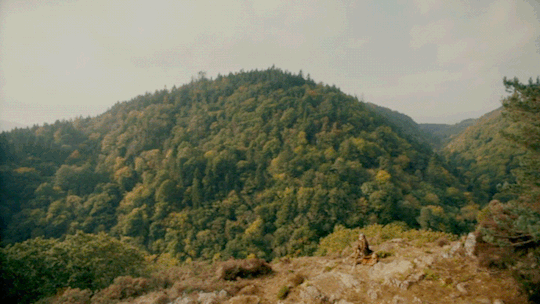

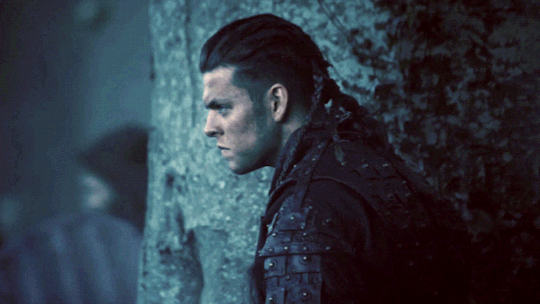


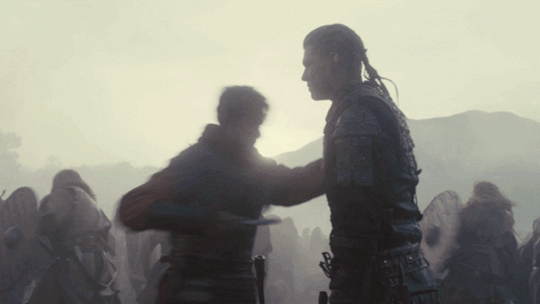
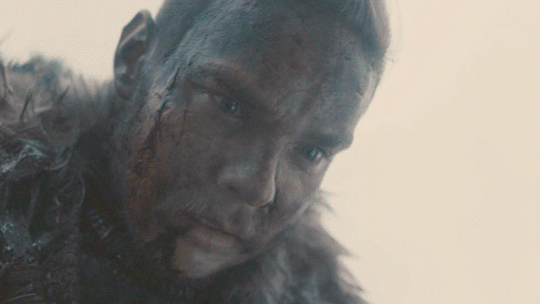
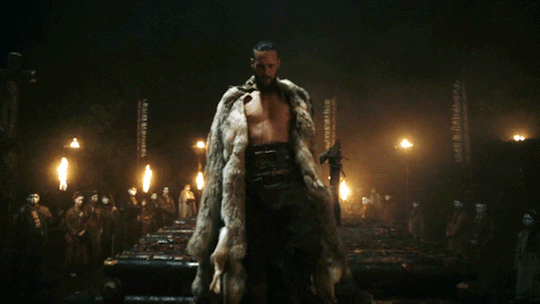
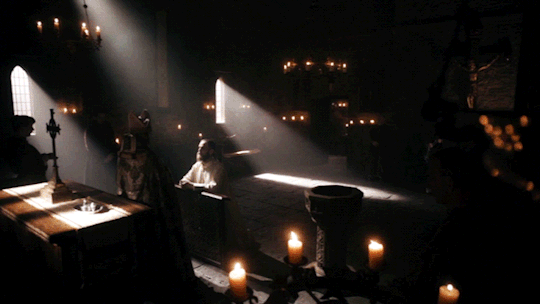

@vikingsevents Autumnal Equinox Event:
| Day 2: Favourite Episode: 6x20
The epic saga which began with Ragnar Lothbrok, the first Vikings leader to emerge from the mists of legend, comes to an end in a spectacular and shocking series finale which finds striking the new land and in England. ~ IMDB
#vikingsfavorites#vikings#vikingsedit#vikings gifs#ivar lothbrok#vikings ivar#ivar ragnarsson#ivar the boneless#alex hogh andersen#mine: edits#mine: ps#hvitserk lothbrok#hvitserk ragnarsson#hvitserk#marco ilsø#ubbe ragnarsson#jordan patrick smith#alfred vikings#alfred the great#ferdia walsh peelo#floki#gustaf skarsgard#pekitaulet#sagamaw pekitaulet#ttp-eligifs
92 notes
·
View notes
Note
hi, appreciate your work! i was wondering how you research everything (especially asteroids). do you read books? have various google searches? what do you think is the best approach to learn more?
where i get my information (recommended reading from a literature major on the mythical)
hello! thank you for the praise. please click here to read about me and my story with astrology. the short comprehensive answer is that i read a lot of literature and have been for many years. so here are books that i read and reference majorly when writing my posts!
egyptian myth
complete gods and goddesses of ancient egypt by richard h. wilkinson
egyptian mythology: a guide to the gods, goddesses, and traditions of ancient egypt by geraldine pinch
egyptian myths: a guide to the ancient gods and legends by garry j. shaw
greek myth
classical mythology a to z: an encyclopedia of gods & goddesses, heroes & heroines, nymphs, spirits, monsters, and places by annette giesecke
greek tragedy by aeschylus, euripides, and sophocles
heroes by stephen fry
iliad by homer
jason and the golden fleece by apollonius of rhodes
the library of greek mythology by apollodorus
mythos by stephen fry
the odyssey by homer
the trojan women and other plays by euripides
the rise of rome by livy
norse myth
gods and myths of northern europe by h. r. ellis davidson
the prose edda: norse mythology by snorri sturluson
the poetic edda: stories of the norse gods and heroes by jackson crawford
the saga of the volsungs: with the saga of ragnar lothbrok by jackson crawford
the viking spirit: an introduction to norse mythology and religion by daniel mccoy
roman myth
aeneid by virgil
metamorphoses by ovid
the rise of rome by livy
roman myths: gods, heroes, villains and legends of ancient rome by martin j. dougherty
#astrology#astro community#astro chart#astro placements#asteroid astrology#asteroid#natal chart#persona chart#greek mythology#roman mythology#egyptian mythology#norse mythology#mythological#mythology#book rec list#amazon#booklr#books and reading#astrology tumblr#astrology notes
122 notes
·
View notes
Note
Hello. I saw in your bio that you study ELL. May I ask where and for how long? Do you mind sharing some of your resources with a teenager who pursues the same dream as you? I'm interested in philosophy and sociology mostly but anything you want to share is fine. (I don't want to be a creep, I just like your blog and style and that's pretty much it. Thank you!)
Hello to you too dear. First of all, this is the first question I've ever got in this app and it being related to my major means the world to me so thank you for that.
I've been studying ELL for 3 years now in my homeland Turkey, but I'll soon be an exchange student transferring to a university in Europe. At first, I wanted to study linguistics but it is so hard to do that here as public universities usually don't teach it. So, I decided to go for ELL.
I'm not sure whether you're a beginner or advanced in this field but I'll state them as a list under the titles of the lectures I've taken from year 1 to 3, so it'll be easier for you to follow. Even without diving into the literature part it'll be a long list!
1. Textual Analysis (Personal favourite)
This course starts with the question of what is literature and continues with discussions developed over analyzable text types. In this course, it is aimed to provide analytical reading skills that are of maximum importance for literary studies, focusing especially on texts from the prose type. By using practical text analysis methods in the course, it is shown how the students should approach the text when they encounter similar texts.
https://www.goodreads.com/book/show/2784.Ways_of_Seeing
https://www.goodreads.com/book/show/11298348-rhetoric-of-the-image
https://www.goodreads.com/book/show/6717156-a-meditation-upon-a-broom-stick
https://www.goodreads.com/book/show/7624.Lord_of_the_Flies
https://www.goodreads.com/book/show/2932.Robinson_Crusoe
https://www.goodreads.com/book/show/29903.The_Plato_Papers
https://www.goodreads.com/book/show/2355014.Ozymandias
https://www.goodreads.com/book/show/1349889.The_Shield_of_Achilles
https://www.goodreads.com/book/show/12204.The_Road_Not_Taken_and_Other_Poems
https://www.goodreads.com/book/show/81780.A_Poetics_of_Postmodernism
3. Mythology / Classical Literature
The aim of this course is to examine the Greek and Northern mythologies and the contributions of these mythological systems to English Literature in detail. In the second semester of this course, which consists of two semesters, students will be taught examples from Classical Greek drama so they will have made a preparation for the drama lessons they will take in their 2nd, 3rd, and 4th years.
https://www.goodreads.com/book/show/588138.The_Hero_With_a_Thousand_Faces
https://www.goodreads.com/book/show/30289.The_Republic
https://www.goodreads.com/book/show/13270.Poetics
https://www.goodreads.com/book/show/752900.Medea
https://www.goodreads.com/book/show/1554.Oedipus_Rex
https://www.goodreads.com/book/show/12914.The_Aeneid
https://www.goodreads.com/book/show/35546041-the-saga-of-the-volsungs-with-the-saga-of-ragnar-lothbrok
We have also covered the Illiad, the Odyssey, and Theogony/Works and Days but they're the basics so I didn't include them necessarily.
4. Medieval Thought and Literature
With this course, it is aimed that students will read the texts of Chaucer and his contemporary authors. In the light of the characteristics of the period, the texts will be examined in a cultural and historical context, and the literary genres and traditions of the period will be examined.
https://www.goodreads.com/book/show/823647.The_Art_of_Courtly_Love
https://www.goodreads.com/book/show/119073.The_Name_of_the_Rose
https://www.goodreads.com/book/show/6656.The_Divine_Comedy
https://www.goodreads.com/book/show/51799.The_Decameron
2. British Intellectual Thought (Personal favourite #2)
This course attempts to cover selected texts that contribute to British and European intellectual scene from the the 16th century onwards. It aims to teach the development of the British intellectual world while examining the selected works in relation to the socio-cultural atmosphere they were created in. It also tries to teach the students how to read and respond to the chosen texts critically.
https://www.goodreads.com/book/show/303488.A_Defence_of_Poetry
https://www.goodreads.com/book/show/7496681-advancement-of-learning-novum-organum-new-atlantis
https://www.goodreads.com/book/show/38483444-answer-to-sir-william-davenant-s-preface-before-gondibert
https://www.goodreads.com/book/show/250278.An_Essay_On_Criticism
https://www.goodreads.com/book/show/584637.Utilitarianism
https://www.goodreads.com/book/show/677591.The_Subjection_of_Women
https://www.goodreads.com/book/show/30529.A_Philosophical_Enquiry_into_the_Origin_of_our_Ideas_of_the_Sublime_and_Beautiful
https://www.goodreads.com/book/show/11971338-of-the-standard-of-taste
https://www.goodreads.com/book/show/705331.On_Heroes_Hero_Worship_and_the_Heroic_in_History
https://www.goodreads.com/book/show/251264.Culture_and_Anarchy
https://www.goodreads.com/book/show/599840.On_Art_and_Life
https://www.goodreads.com/book/show/637963.The_Decay_Of_Lying
5. Children's Literature
This course aims to introduce British children's literature through reading and analysing canonical texts of children's literature from different time periods and sub-genres such as fairy tales, children's fantasy literature, animal stories, picture books, Christmas narratives and adventure stories. This course is designed to equip students with the skills of reading children's literature from a critical perspective by scrutinizing recursive motifs, patterns, linguistic elements, social, cultural and historical codes embedded in the assigned texts.
I included this as well, as it also discovers the essays and works of various philosophers on learning, teaching, and the shaping motifs of society.
https://www.goodreads.com/book/show/90078.An_Essay_Concerning_Human_Understanding
https://www.goodreads.com/book/show/2273164.Some_Thoughts_Concerning_Education
https://www.goodreads.com/book/show/5326.A_Christmas_Carol
https://www.goodreads.com/book/show/2623.Great_Expectations
https://www.goodreads.com/book/show/295.Treasure_Island
This will be all from me for a while as I'm on a vacation abroad; however, I'll try to add anything I could recall under this post. If you also need the PDFs, just DM me and I'll provide you with them right away.
Wish you the best with your and anyone's studies that saw this post!
#books#english language and literature#philology#college#university#dark academia#chaotic academia#poetics#the republic#greek mythology#norse mythology#philosophy#sociology#the secret history#henry winter#aesthetic#girlblogging#english lit student#english literature#bookblr#good luck bestie#bye now
8 notes
·
View notes
Text
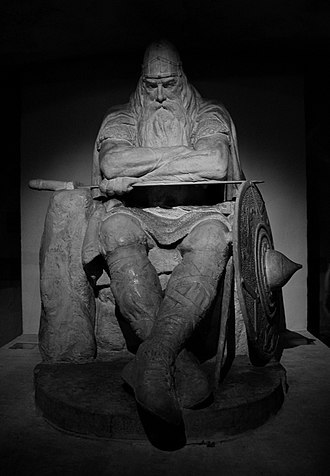

Ogier the Dane: According to a legend linked to Arthurian myth, a Danish king known as Ogier the Dane (Danish: Holger Danske), was taken to Avalon by the enchantress Morgan le Fay. Ogier returned to rescue France from danger, then travelled to Kronborg castle, where he sleeps until he is needed to save his homeland. His beard has grown to extend along the ground. A statue of the sleeping Ogier (above) has been placed in the castle casemates.
This legend linked to the saga of Ragnar Lothbrok and his sons was the basis foe Edison Marshal's novel the Viking which was the basis for the 1957 movie the Vikings (pictured below). The character Eric, portrayed by Tony Curtis in the movie is Ogier in the novel. In the film blond Janet Leigh portrays Morgan who has black hair in the legend and the novel.

8 notes
·
View notes
Text
Wait, that Vikings TV Show was about Ragnar and his sons specifically?! I never watched it but just saw a bit about it having Ivar the Boneless (my favorite character across Saga of the Volsungs and Saga of Ragnar Lothbrok) and then looked into it.
Don't think I'll watch it since it seems to be more on the historical side, while I'd want to see the cow empowered by human sacrifice and Ivar founding London, the greatest city in all of Scandinavia. But it's nice to see the Ragnarsons are acknowledged by more people than I realized.
3 notes
·
View notes
Text
"Vikings", "Vikings Valhalla", History and Faith
New Post has been published on https://www.ebvs.blog/2023/01/15/vikings_valhalla_1/
"Vikings", "Vikings Valhalla", History and Faith
Netflix has released all 8 episodes for the second season of Vikings Valhalla, something I have very much been looking forward to. Before I start writing reviews of the episodes, however, I thought I would offer some thoughts on the show and its predecessor, Vikings, along with comments on the show’s portrayal of the characters’ faith and the clash between the Heathen Norse and the Christian English. There are no spoilers for the new season of Valhalla in this article, though I will write openly about events from the first season and from the original Vikings series.
Leo Suter as Harald Sigurdsson
One thing that’s important to remember when watching shows like this is that they are dramas first and foremost and are not intended to be seen as historically accurate – which is kind of ironic since the first series aired on the History Channel. It’s best to assume that, while some things are based on actual history, most of it is fictional.
Travis Fimmel and Katheryn Winnick as Ragnar and Lagertha
For example, the first series was based on the life and family of Ragnar Lothbrok, yet there is little (if any) evidence that shows he existed. The case for the existence of his supposed sons Bjorn Ironsides, Ubba, Sigurd Snake-In-The-Eye, Hvitsverk, and Ivar the Boneless is stronger, but again there is little to show they were related to each other or to the legendary Ragnar. And there’s no evidence Alfred the Great was the son of anyone other than King Aethelwulf, or that his mother had his brother poisoned.
In regards to Valhalla, the three main characters are actual, historical figures. Harald Sigurdsson, Leif Eriksson and Freydis Eriksdotter did exist. They just wouldn’t have known each other, given that Leif died roughly 3 to 5 years after Harald was born.
This doesn’t mean everything is fictional, however. Many of the characters are historical people whose known lives were similar to what is shown (though perhaps in a slightly different time period) and most of the important battles are based on real ones. Also very real is the struggle between the Heathen faith of the Vikings and the Christianity of the English.
Sam Corlett as Leif Eriksson
One aspect of the show that has been fascinating for me has been their depiction of the Norse faith, though, like the rest of the show, drama takes precedence over reality. In the first series, we see Ragnar going to a Thing (pronounced ting) in Uppsala, where a mass sacrifice of 9 men is going to take place. It’s known that the Vikings did sacrifice humans, but aside from a mention in Adam of Breman’s writings on Germania of a large sacrifice similar to the one on the show, there’s been no evidence I’m aware of showing something like that took place – much less regularly, as the show implies.
Another ritual portrayed on the show – the Blood Eagle – was written of in the Sagas, but to date, no evidence has been found to attest to its existence. This method of execution involved opening the back of the person being killed and cutting the ribs away from the spine. Such damage would be easily recognized on any remains found even today, but so far, none have.
Katheryn Winnick as Lagertha while leading a ritual.
Not everything they depict is fictional, however. On the show, we see very few priests and priestesses for the Norse. Rituals and the celebration of holidays usually took place within the family or community. In Vikings, we see Lagertha as Jarl leading rituals for her people. She is shown presiding over animal sacrifices and then sprinkling the blood of the animal onto those in the gathering. This all matches up to what we know from historical records.
Frida Gustavsson as Freydis Eriksdotter
There were a few temples where people could come to make sacrifices, speak or pray with priests or priestesses (known as gothis and gythias), or seek training in the more esoteric aspects of the Norse faith – the temple at Uppsala where Freydis goes for training during the first season of Vallhalla being one of the most famous. Most cities and towns, however, did not have temples. In the show, for as important a city as Kattegat is, it doesn’t appear to have one. This is because the pre-Christian Norse were more likely to worship outside and because for them, faith wasn’t something you went someplace to do, it was just another part of life like sleeping or eating.
It’s not much different for today’s modern Heathens. One important way in which things have changed is that only a very few modern groups engage in animal sacrifice – most will make symbolic sacrifices or sacrifices of food and drink or meaningful objects, and the ritual leader blesses the gathered worshipers by sprinkling them with mead or ale, not blood.
The shows also place a large focus on the conversion of the Heathens to Christianity. In the first series, we saw the Vikings raiding churches and monasteries. This wasn’t because they were Christian facilities, however. They were chosen because that’s where large amounts of wealth were kept, generally under a light guard. When they began settling in Christian England, some would convert, some, like Ubba, would pretend to convert to try and placate the church authorities, while others would proudly cling to their Heathen faith, even though that might mean death. In general, though, they left Christians living nearby in peace, seeking to live lives of raising families, farming, and building a community. Here, too, the show gives a fairly good view of what we know of the early settlements of the Norse. While the Viking raiders could be terrifying in their aggression, the men and women who came with them to find new homes were typically peaceful.
By the time Valhalla‘s first season starts, a growing number of the Norse have been converted to Christianity – many at the point of a sword. These Christians were determined to convert all of the Heathen northlands, and we see entire communities destroyed and all of the people in them killed. One of the most vivid scenes is when a Christian knight who considers it his mission to eliminate as many Heathens as possible leads a raid on the Uppsala temple. Only Freydis survives the slaughter. We see King Olaf putting together his Christian army to bring the new faith to as many places as he could and to destroy those where he couldn’t. Sadly, these scenes reflect the all-too-real brutality that Christians used to achieve their goal of Christianizing Scandinavia. This is supported not just by the history of the northlands but can be seen in other crusades of the Christians where they have tried to wipe out other faiths by any means necessary.
Echoes from those years of conversion can still be heard today. While Christians no longer kill those who won’t convert, has become the dominant faith in the western world, and many Christians still believe it should be the only one. Those who follow other faiths, including modern Heathens, are still frequently discriminated against. The physical battles may be over, but the war is still underway.
Vikings and Vikings Valhalla offer us a look at life in a time we can only know from ancient records and our imaginations. There’s a lot in the shows that is factually wrong, usually in terms of showing historical people being friends or relatives of people who they most likely couldn’t have known. It also treats some people whose existence is unverified as if they were real. And they use some largely unfounded stories to amp up the drama. But the shows also feature a fair amount of truth in things like the day-to-day lives of the people of the time, their faith, and some of the main historical events of the day.
The extra drama from the fictional elements helps make the shows a great deal of fun but keep your salt shakers handy for the grains you going to need.
9 notes
·
View notes
Text
the analogy between Barnstokk (idiomatically family tree) and the tree that kept Volsung' sons in place when being eaten by the she-wolf, and of her possibly being Siggeir's mother.
And the tree trunk bursting as Sigmund breaks free.
#many thoughts#almost getting to my boy Sinfjotli#reread#the saga of the volsungs#volsunga saga#the saga of ragnar lothbrok#sigmund volsungsson#signy volsungsdottir
0 notes
Text
Of all the Viking heroes, few are as famous as the fearsome Ragner Lothbrok. Old Norse Sagas recount his countless heroics, such as his infamous siege on Paris in 845 AD.
19 notes
·
View notes
Photo
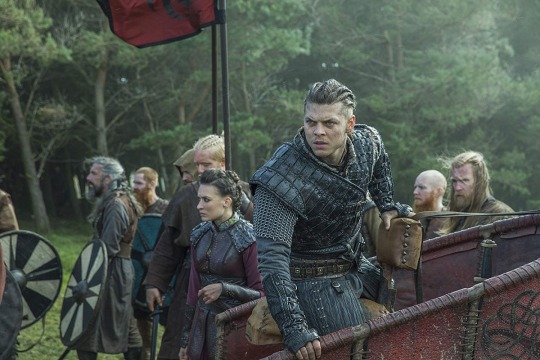
Ivar el Deshuesado
Ivar el Deshuesado (nórdico antiguo Ívarr hinn Beinlausi) es conocido gracias a las sagas nórdicas antiguas y en las crónicas medievales en latín como el hijo del legendario rey vikingo Ragnar Lothbrok. Estas historias hablan acerca de los saqueos que realizaron Ivar, su padre y sus hermanos y de cómo se convirtió en el gobernante de York en Inglaterra en el siglo IX d.C. Su epíteto es el lamentable resultado del deseo de Ragnar en su noche de bodas con Aslaug, quien le advirtió en vano que debían esperar tres noches antes de consumar el matrimonio, para que el hijo que concibieran no naciera sin huesos. Lo que implica con exactitud la falta de huesos de Ivar es difícil de visualizar: tenemos la impresión de huesos débiles o quebradizos o sin huesos, al menos en sus piernas, pero, de cualquier manera, lo llevan a todas partes en una camilla o un escudo. Es famoso por su inteligencia y perspicacia estratégica, y en lo general se le muestra como el líder de sus hermanos en sus aventuras. La popular serie de televisión Vikings, en la que Ivar es interpretado por Alex Høgh Andersen, hace eco de este rasgo y lo muestra también como un estratega brillante; aquí lo arrastran en un carro debido a su discapacidad y se lo presenta como un niño malcriado, cruel y despiadado que se vuelve un poco sociópata, matando a su hermano Sigfrido Serpiente en el Ojo en un ataque de ira (todo ello licencia creativa).
Lire la suite...
0 notes
Text


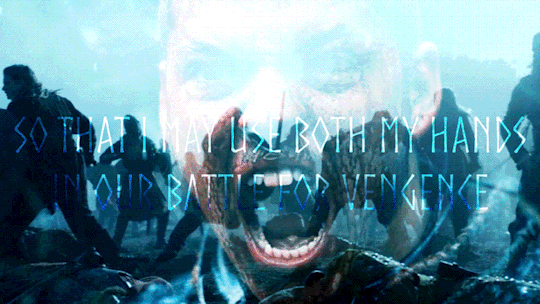
@vikingsevents Autumnal Equinox Event:
| Day 1: Favourite Character: IVAR THE BONELESS
Quote from The Saga of Ragnar Lothbrok
Said by Ivar the Boneless to his brothers
#vikingsfavorites#vikings#vikingsedit#vikings edit#ivar lothbrok#vikings ivar#ivar ragnarsson#ivar the boneless#alex hogh andersen#mine: edits#mine: ps#ttp-eligifs
44 notes
·
View notes
Text
WHEN ENGLAND WAS PART OF A VIKING EMPIRE - CLAN CARRUTHERS CCIS
WHEN ENGLAND WAS PART OF A VIKING EMPIRE – CLAN CARRUTHERS CCIS
WHEN ENGLAND WAS PART OF A VIKING EMPIRE
EVERY PERSON YOU READ ABOUT IS A CARRUTHERS ANCESTOR, INCLUDING WINSTON CHURCHILL IN THE SOURCES
The Saga of Ragnar Lothbrok refers to London as “the finest city in Scandinavia.” This seems like quite a mistake, considering London is the capital of England and sits on the east coast of Britain. However for the skalds who composed the old saga, London…

View On WordPress
#aethelred#ancient and honorable clan carruthers#brian boru#carrothers#carruthers#Carruthers Vikings#clan carruthers ccis#DANES#edmund ironside#Goths#Gutland#Knut#svein#swyen forkbeard#vikings in england
1 note
·
View note
Text
CUEVANA-4 Príncipe de los dragones' Temporada 4 Capitulo 1 Online Espanol-HD
CUEVANA-4 Príncipe de los dragones' Temporada 4 Capitulo 1 Online Espanol-HD
Ver Príncipe de los dragones 4x1 Temporada 4 Capitulo 1 Online en Español
Príncipe de los dragones 4x1 Online Espanol - Príncipe de los dragones Temporada 4 Capitulo 1 SUB ESPANOL, Príncipe de los dragones 4x1 Ver Online, Príncipe de los dragones 4x1 Online espanol Serie completa, Príncipe de los dragones Temporada 4 Capitulo 1 Online En Español Latino Subtitulado,
VER CAPITULOS COMPLETOS ❙
Ver-Descargar | Series en Español Ver Príncipe de los dragones Temporada 4 Capitulo 1 SUB Español Ver Series Príncipe de los dragones - Temporada 4 Capitulo 1 Online en Español Audio Latino y Subtitulado
VER SUB ESPANOL COMPLETOS ❙ Príncipe de los dragones Temporada 4 Capitulo 1 LATINO
CLIC aqui VER SERIE ▶▶ https://bit.ly/3DMQE4W
Clic Aquí DESCARGAR SERIE ▶▶ https://bit.ly/3DMQE4W
SINOPSIS
Un descubrimiento extraordinario inspira a dos príncipes y a la elfo que iba a matarlos a unir fuerzas para traer la paz entre sus pueblos.
Ver Príncipe de los dragones - Temporada 4 Capitulo 1 : Solo es magia Online espanol | VERPELIS-TV
Sigue las aventuras de Ragnar Lothbrok, el héroe más grande de su época. La serie narra las sagas de la banda de…
❏ STREAMING MEDIA ❏
Streaming media is multimedia that is constantly received by and presented to an end-user while being delivered by a provider. The verb to stream refers to the process of delivering or obtaining media in this manner.[clarification needed] Streaming refers to the delivery method of the medium, rather than the medium itself. Distinguishing delivery method krom the media distributed applies specifically to telecommunications networks, as most of the delivery systems are either inherently streaming (e.g. radio, television, streaming apps) or inherently non-streaming (e.g. books, video cassettes, audio CDs). There are challenges with streaming content on the Internet. For example, users whose Internet connection lacks sufficient bandwidth may experience stops, lags, or slow buffering of the content. And users lacking compatible hardware or software systems may be unable to stream certain content.
Live streaming is the delivery of Internet content in real-time much as live television broadcasts content over the airwaves via a television signal. Live internet streaming requires a form of source media (e.g. a video camera, an audio interface, screen capture software), an encoder to digitize the content, a media publisher, and a content delivery network to distribute and deliver the content. Live streaming does not need to be recorded at the origination point, although it krequently is.
Streaming is an alternative to file downloading, a process in which the end-user obtains the entire file for the content before watching or listening to it. Through streaming, an end-user can use their media player to start playing digital video or digital audio content before the entire file has been transmitted. The term “streaming media” can apply to media other than video and audio, such as live closed captioning, ticker tape, and real-time text, which are all considered “streaming text”.
❏ COPYRIGHT CONTENT ❏
Copyright is a type of intellectual property that gives its owner the exclusive right to make copies of a creative work, usually for a limited time. The creative work may be in a literary, artistic, educational, or musical form. Copyright is intended to protect the original expression of an idea in the form of a creative work, but not the idea itself. A copyright is subject to limitations based on public interest considerations, such as the fair use doctrine in the United States.
Some jurisdictions require “fixing” copyrighted works in a tangible form. It is often shared among multiple authors, each of whom holds a set of rights to use or license the work, and who are commonly referred to as rights holders.[citation needed] These rights krequently include reproduction, control over derivative works, distribution, public performance, and moral rights such as attribution.
Copyrights can be granted by public law and are in that case considered “territorial rights”. This means that copyrights granted by the law of a certain state, do not extend beyond the territory of that specific jurisdiction. Copyrights of this type vary by country; many countries, and sometimes a large group of countries, have made agreements with other countries on procedures applicable when works “cross” national borders or national rights are inconsistent. Typically, the public law duration of a copyright expires 50 to 100 years after the creator dies, depending on the jurisdiction. Some countries require certain copyright formalities to establishing copyright, others recognize copyright in any completed work, without a formal registration.
It is widely believed that copyrights are a must to foster cultural diversity and creativity. However, Parc argues that contrary to prevailing beliefs, imitation and copying do not restrict cultural creativity or diversity but in fact support them further. This argument has been supported by many examples such as Millet and Van Gogh, Picasso, Manet, and Monet, etc.
0 notes